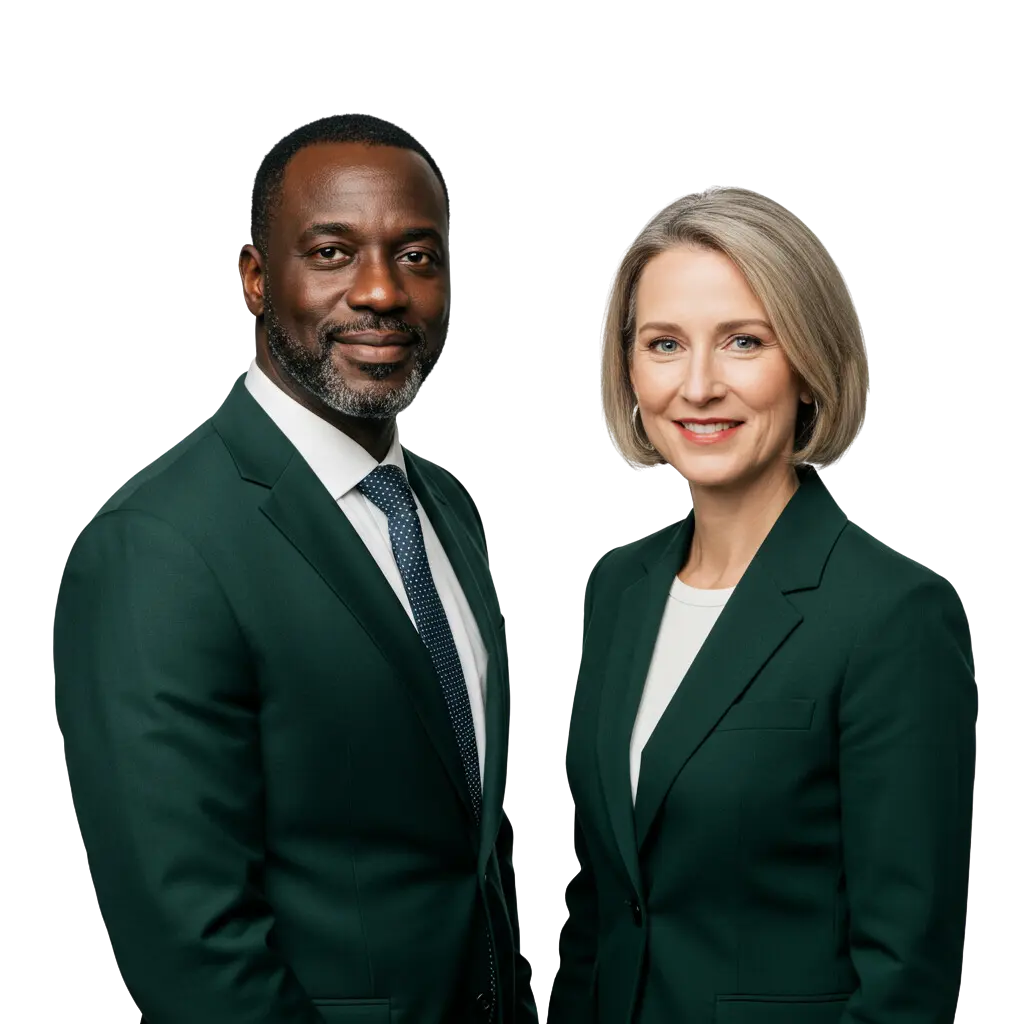The Word We’re All Tired of Hearing
“Unprecedented.”
If I never hear that word again, it’ll be too soon. But here’s the uncomfortable truth: it’s the word of the decade because it’s accurate. Since the pandemic, we’ve experienced circumstances that simply haven’t happened in our recorded business history—at least not in any history we can recall or learn from.
Remote work didn’t just change where we work; it fundamentally altered how trust is built in professional relationships. Economic uncertainty didn’t just affect spending; it created a generation of decision-makers who second-guess every choice. Digital fatigue didn’t just make us tired of screens; it made authentic, in-person connections more valuable than gold.
In this “unprecedented” environment, your prospects aren’t just risk-averse—they’re paralyzed by the fear of making the wrong decision. And in their paralysis, they’ve developed a new requirement for moving forward: they need their entire trust network to validate their choices.
This isn’t just changing how people buy. It’s creating an entirely new opportunity for professionals who understand how to work within this new reality.
The New Psychology of Professional Decision-Making
Here’s what I’ve observed across hundreds of purchasing decisions since 2020: buyers have essentially “circled the wagons.” They’ve retreated into their trusted networks and refuse to make significant decisions without consensus from their inner circle.
Whether you’re selling enterprise software, financial services, consulting, or any high-stakes solution, your prospect isn’t just evaluating your offering. They’re asking themselves:
- “What will my trusted advisor think about this?”
- “Who else do I know who’s made a similar decision?”
- “Which colleagues would I trust to validate this choice?”
- “What would my mentor recommend?”
- “Who in my network has experience with this type of solution?”
This isn’t weakness—it’s wisdom. In an uncertain world, social proof has become the primary risk mitigation strategy. Your prospects have learned that the safest decisions are the ones their trusted network supports.
But here’s where most professionals get it wrong: they’re still trying to convince the prospect directly, when the real decision-makers are the people whispering in their prospect’s ear.
Mapping the Trust Network: Your New Competitive Advantage
The professionals winning in this environment have figured out something profound: you don’t need to be the best solution. You need to be the solution that their trust network recommends.
This requires a fundamental shift in how you approach prospecting. Instead of targeting the prospect, you target the prospect’s influencers. Instead of building one relationship, you build an ecosystem of advocates.
Here’s the framework for mapping and penetrating your prospect’s center of influence:
Step 1: Identify the Trust Network
Before you ever reach out to a prospect, invest time in understanding their influence ecosystem. This isn’t about org charts or reporting structures—it’s about emotional and professional trust relationships.
Research these key influencer categories:
Professional Advisors: Who do they turn to for strategic guidance? This includes consultants, attorneys, accountants, coaches, and industry experts who have their ear.
Peer Network: Which colleagues, industry contacts, or business partners do they respect and trust? Look for people they interact with on LinkedIn, speak at conferences with, or mention in interviews.
Previous Vendors: Who have they worked with successfully in the past? These relationships often carry significant influence because they’ve already proven trustworthy.
Industry Connections: Which thought leaders, association contacts, or networking group members are in their orbit? These relationships provide social proof and credibility.
Personal Board of Directors: Every successful professional has 3-5 people whose opinions matter most to them. These might be mentors, former bosses, trusted peers, or even family members involved in business decisions.
Step 2: Research and Prioritize
Once you’ve identified potential influencers, prioritize them based on:
Accessibility: How easily can you connect with them through your existing network?
Influence Level: How much weight does their opinion carry with your prospect?
Alignment: How likely are they to see value in your solution and become an advocate?
Reciprocity Potential: What value can you provide to them in return for their advocacy?
Step 3: Create Connection Strategies
For each priority influencer, develop a specific plan for building a relationship:
Direct Connection: If you share mutual connections, request introductions with compelling context about why the meeting would be valuable for both parties.
Value-First Approach: Lead with ways you can help them, not ways they can help you. This might include introductions, insights, or resources relevant to their business.
Event Intersections: Identify conferences, networking events, or industry gatherings where you can meet naturally.
Content Engagement: Engage meaningfully with their content, share their insights, and position yourself as someone who understands their expertise.
Step 4: Build Advocate Relationships
This is where patience and authenticity become your greatest assets. Your goal isn’t to immediately ask for introductions to your prospects. Your goal is to become someone these influencers know, trust, and want to help succeed.
Provide Value First: Share opportunities, make introductions, offer insights, or provide services that help them achieve their goals.
Demonstrate Expertise: Show them your knowledge and capabilities through meaningful conversations, not sales pitches.
Build Personal Connection: Find genuine common ground and shared interests that go beyond business transactions.
Establish Credibility: Share relevant case studies, results, and testimonials that demonstrate your ability to deliver value.
Step 5: Orchestrate Influence Convergence
Here’s where the magic happens. Once you’ve built relationships with multiple influencers in your prospect’s network, you can begin the delicate process of influence convergence.
This isn’t about asking everyone to make introductions simultaneously. It’s about creating a natural environment where multiple trusted voices are singing your praises.
Strategic Timing: Coordinate conversations so your prospect hears about you from multiple sources within a concentrated timeframe.
Consistent Messaging: Ensure your advocates understand your value proposition and can communicate it authentically in their own words.
Natural Advocacy: Create situations where advocacy happens organically—at industry events, in casual conversations, or through shared experiences.
The Compound Effect: When Multiple Voices Become Unstoppable
When you successfully implement this strategy, something remarkable happens. Your prospect doesn’t just hear about you from one source—they start hearing about you everywhere. This creates a psychological phenomenon known as the “frequency illusion” or “Baader-Meinhof effect,” where they begin noticing your name and reputation in multiple contexts.
But more importantly, it creates social proof momentum. When three people in their trust network independently mention your name, it’s no longer a coincidence—it’s a pattern. And patterns create confidence in uncertain decision-makers.
The compound effect of multiple advocates:
Reduces Perceived Risk: When multiple trusted sources vouch for you, the decision feels safer.
Creates FOMO: Your prospect begins to worry they’re missing out on something their entire network is talking about.
Accelerates Trust: Trust that might take months to build directly happens in weeks through transferred credibility.
Generates Urgency: When everyone is talking about you, waiting becomes the risky choice.
Case Study: How a Wealth Advisor Surrounded His Dream Prospects
Let me share a story that perfectly illustrates this strategy in action. A wealth advisor I know decided he wanted to work exclusively with high-net-worth executives from the local “book of lists”—you know, the annual publication highlighting the most successful business leaders in the region.
Instead of cold-calling these prospects or sending LinkedIn messages, he took a completely different approach. He obtained the list of 25 individuals and began systematically researching each person’s professional network and influence ecosystem.
For each target prospect, he identified:
- Their primary professional advisors (attorneys, accountants, business consultants)
- Board members and business partners
- Industry peers and networking contacts
- Previous service providers they’d worked with successfully
Then he developed what he called his “introduction strategy.” But here’s what made him different: while most wealth advisors just managed financial assets, he wanted to become a “concierge” for his clients’ entire asset ecosystem.
His value proposition was revolutionary in the wealth management space. He told influencers he was building a comprehensive service that addressed everything other advisors considered “not in their wheelhouse”:
- Career transition resources for executives changing roles or retiring
- Strategic connections across industries and markets
- Real estate expertise since many executives had significant property holdings
- Family legacy planning beyond traditional estate planning
- Philanthropic resources around planned giving and charitable strategies
- Lifestyle management for complex personal and business needs
Here’s the genius part: when requesting introductions through mutual connections, he didn’t just ask to meet these influencers. He provided their names and explained that he was building something completely different in wealth management—a “concierge” model that these successful executives desperately needed but couldn’t find anywhere else.
His value statements to influencers included:
- “I’m building the wealth management service your high-net-worth clients keep asking for but can’t find”
- “Most advisors manage money; I’m creating a platform that manages their entire success ecosystem”
- “Your clients have complex needs beyond financial planning—I’m building the comprehensive solution”
- “I want your input on designing a service specifically for executives like your clients”
The systematic approach: Over 12 months, he methodically worked through his influence map for each prospect. He attended industry events where these advisors gathered. He provided value through introductions and insights. He built genuine relationships based on mutual benefit.
The results were remarkable:
- Met 24 of the 25 target prospects (one had moved out of the area)
- Invited 13 of them to join an advisory board specifically focused on developing this comprehensive “concierge” wealth management model for executives like them
- The advisory board helped him design services that addressed the gaps they experienced with traditional wealth advisors
- Converted 8 advisory board members into active clients representing over $50 million in assets under management
- Built the exact comprehensive service platform the market was demanding but no one else was providing
But the most telling moment came when one of his target prospects said during their first meeting: “I had to meet you. I’m hearing about you EVERYWHERE and from everyone I trust.”
That’s the power of strategic influence convergence.
Your Implementation Framework
Ready to implement this strategy? Here’s your step-by-step playbook:
Week 1-2: Research and Mapping
- Create your target prospect list
- Research each prospect’s influence network
- Identify 3-5 key influencers per prospect
- Map your existing connections to these influencers
Week 3-4: Connection Strategy
- Develop value statements for each influencer category
- Identify mutual connections who can facilitate introductions
- Plan your approach sequence and timing
- Prepare your “why they want to know me” statements
Month 2-3: Relationship Building
- Begin reaching out to influencers through warm introductions
- Provide value first in every interaction
- Build authentic relationships without immediate asks
- Document interactions and relationship progress
Month 4-6: Advocacy Development
- Deepen relationships with responsive influencers
- Share relevant case studies and demonstrate expertise
- Begin natural conversations about your target market
- Position yourself as a resource for their network
Month 6-12: Influence Convergence
- Coordinate advocacy timing for maximum impact
- Create environments where multiple advocates can sing your praises
- Monitor for opportunities when prospects hear about you from multiple sources
- Track attribution and results from advocate-sourced opportunities
The New Reality of Professional Relationship Building
In our “unprecedented” world, the professionals who thrive aren’t those with the best solutions—they’re those who understand that trust is now built collectively, not individually.
Your prospects need permission from their trusted network to say yes to anything significant. By surrounding them with advocates before you ever meet them, you’re not just making a sale—you’re providing the psychological safety they need to move forward.
This isn’t manipulation. It’s adaptation to the new reality of how decisions get made in uncertain times. When everyone in their trust network independently validates your value, choosing you becomes the obvious, safe choice.
The question isn’t whether this strategy works—the wealth advisor’s results prove it does. The question is whether you’re ready to stop chasing prospects and start surrounding them with advocates instead.
In a world where “unprecedented” has become the norm, the professionals who adapt their relationship-building strategies to match the new psychology of decision-making will separate themselves from everyone still using last decade’s playbook.
The center of influence strategy isn’t just about building relationships—it’s about building the right relationships in the right sequence to create unstoppable momentum toward your goals.
Your prospects are already surrounded by trusted voices. The only question is: are any of those voices talking about you?







